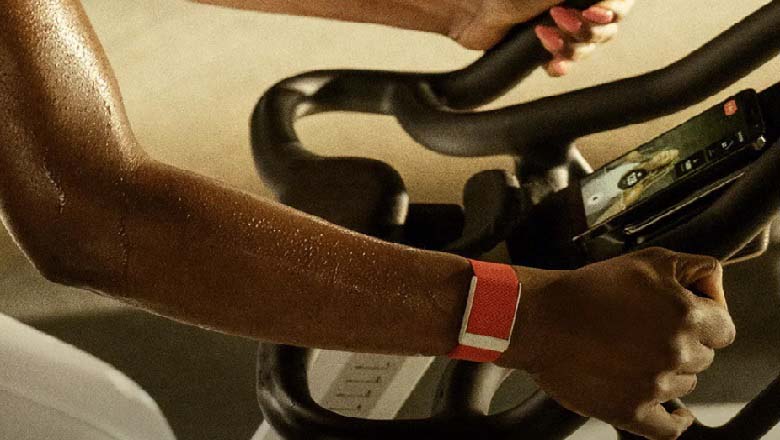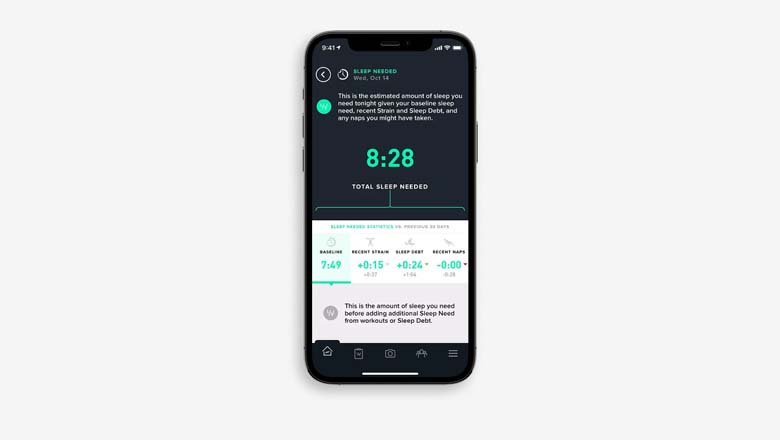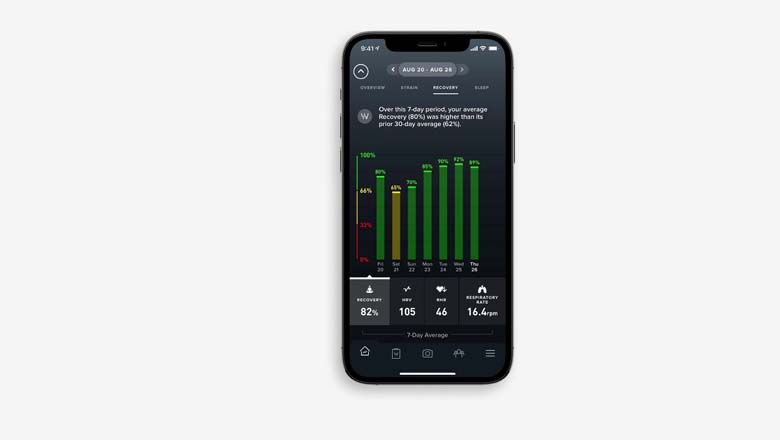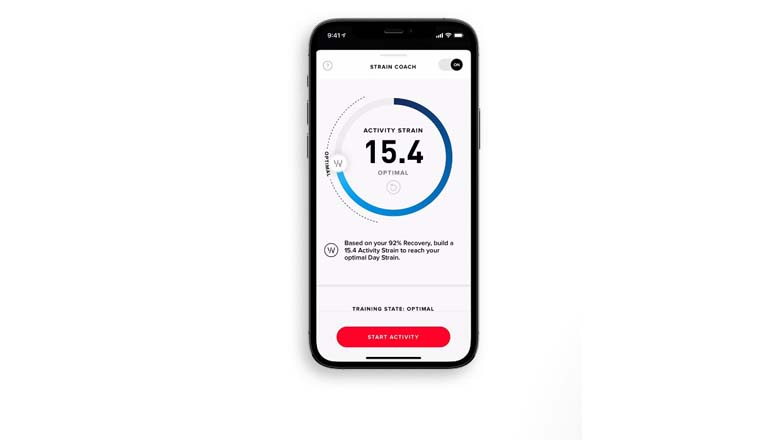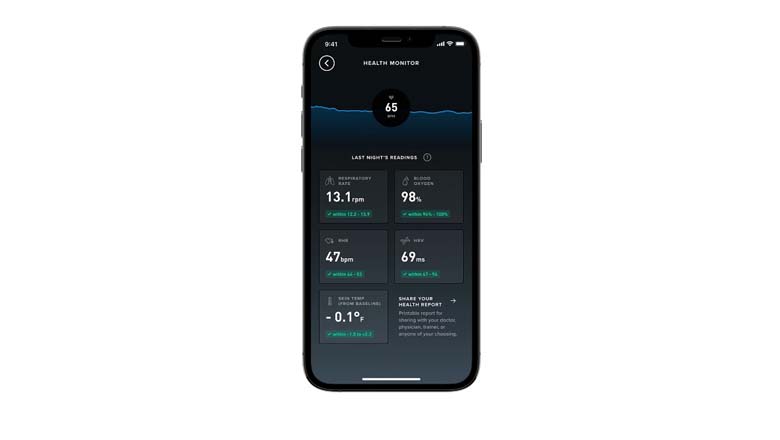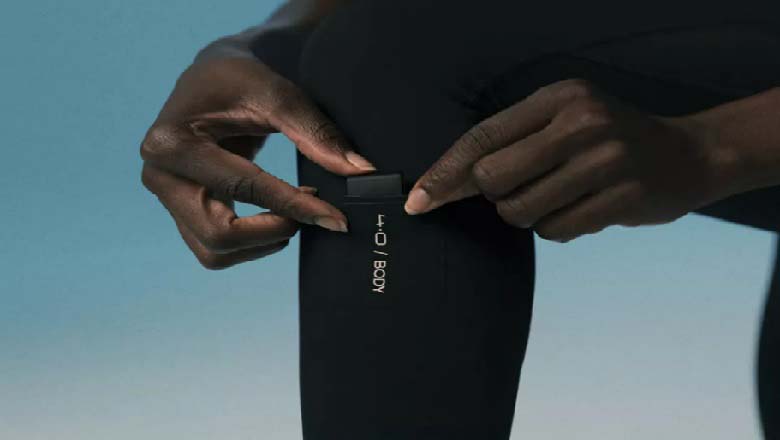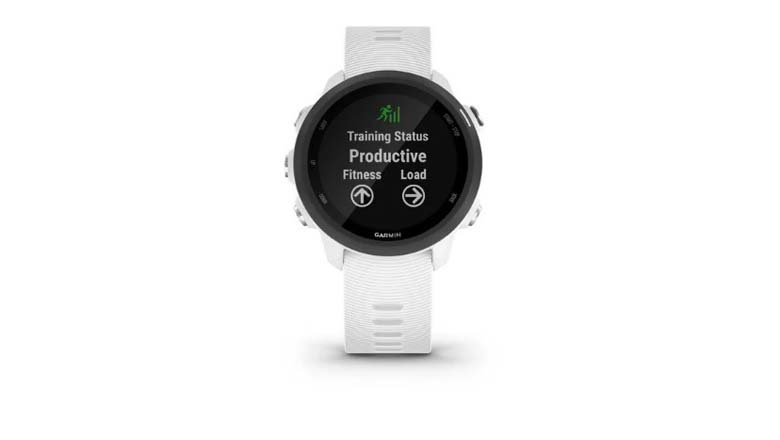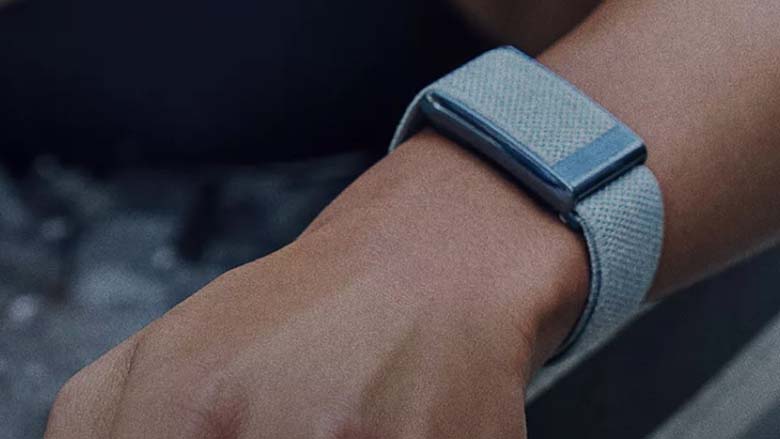
Disclaimer: Heavy Inc. is a participant in the Amazon Services LLC Associates Program and other affiliate advertising programs and may receive a commission if you purchase a product via a link on this page.
There’s a buzzy fitness tracker catching the attention of celebrities and high-level athletes called Whoop 4.0. It’s been spotted on the wrists of famous people like LeBron James, Patrick Mahomes and Rory McIlroy.
As an avid runner and cyclist, I was eager to test out this hardcore fitness device. It’s also great for indoor workouts such as HIIT rowing intervals, Pilates and more. There’s more going for it than its good looks but it’s not right for everyone, especially if you’re looking for a basic fitness tracker. After weeks of testing, here’s our in-depth Whoop 4.0 review to help you decide whether this water-resistant health and fitness device is for you.
How Does Whoop Work?
Exercise is just as important as rest and recovery. This is where Whoop really stands out, as it tracks data 24/7 to give you highly personalized insight into your daily and nightly routines. Instead of a screen, there’s a comprehensive dashboard with detailed information. There are separate categories for sleep, recovery and strain (more on that below). Most athletes find that their performance improves with proper rest, and you’ll have hard numbers to make changes as needed.
To get the most out of your Whoop you can reveal what you’ve been up to in a detailed behavioral journal. Questions range from whether you’ve smoked marijuana to your caffeine intake for the day. You can also note whether you’ve used your phone while in bed, have hydrated sufficiently, shared your room with a dog, etc. Feeling stressed or depressed? You can mention that as well.
Every behavior can have a different impact on your daily performance, so the more specific you are, the more accurate your numbers will be. Your entries are for your eyes only, so don’t be shy!
It takes several days to establish a baseline. You’ll need to wear your tracker day and night to get an accurate assessment. You can then use these numbers as a guide to optimal health. Less of a fitness tracker and more of a total wellness coach, Whoop emphasizes your strain, recovery and sleep scores to give you a clearer picture of your overall health. Let’s take a closer look at what that means.
Understanding the Whoop App
Since there’s no screen you’ll need to rely on the app 100%. The good news is that it’s pretty user-friendly once you’re familiar with the process. The main overview screen shows the battery life, date, time and current status, followed by sleep, recovery and strain. Here’s what those modes mean.
Sleep
Most of us sleep better on some nights than others. Even if you have a consistent schedule, it can be hard to get the quantity and quality of sleep you need each night. For example, maybe you share a bed with a restless partner or are tending to a newborn. Whether your sleep interruptions are obvious or not, Whoop tracks everything to give you a more complete picture than simply measuring sleep stages or hours in bed.
Besides sleep stages, including REM, light and wake time, it also monitors your sleep quality and how long it takes you to fall asleep. Other factors can influence your sleep health as well. For example, your blood oxygen levels and respiratory rates are measured as you sleep and can potentially indicate meaningful changes in your health.
Recovery
Whoop measures how well your cardiovascular system recovers over time. It’s not the same as muscle recovery, which can be especially confusing if the numbers on the screen don’t reflect how you’re feeling after a tough or demanding workout. For example, you might see a high recovery score even if your legs feel like jello the morning after a challenging Peloton bike class.
Strain
Whoop strain measures how much physical and mental stress your body is under. This number can vary for specific activities and workouts. It’s based on your cardiovascular output and how much time you spend in various heart rate zones. Think of it as a personal baseline that changes as your fitness increases or decreases.
The numbers are ranked on a strain scale from 0 to 21, with 0 representing the lightest and 21 being all-out. It’s inspired by Borg’s Rating of Perceived Exertion, or how hard you feel like your body’s working.
If you like to mix things up with cardio and weightlifting, you may notice that the numbers don’t always match your perceived intensity level for certain activities. For example, my strain score was much higher on a 30-minute recovery run than it was during a tough weight training session using the NordicTrack iSelect adjustable dumbbells. However, being able to consistently see your HRV and RHR over time can provide valuable insight into your training loads and recovery. From regular jogs with your kids to hardcore training, it’s easy to track your progress and recovery.
Does It Track Heart Rate?
Whoop 4.0 includes sensors to track your heart rate. It seems to be pretty accurate and consistent with readings on my Apple Watch 7 and Fitbit Charge 5. However, these are all wrist-based devices.
I haven’t compared it to a chest strap, which can be more accurate, according to experts. One Cleveland Clinic cardiologist says that wrist-worn monitors often aren’t as accurate as chest-worn ones. That’s because optical sensors on the wrist read blood flow when it’s farther from the heart, and may be less accurate when light hits the sensor during arm movements or when you flex your wrist.
If you’re used to wearing a chest strap for accurate heart rate monitoring, the good news is that you still can, but you won’t be able to sync your strap with your Whoop watch. Also, since this Whoop fitness tracker lacks a screen, you’ll need the app to check your numbers. You also need to jump through a few hoops to view your heart rate in real-time.
Is Whoop Comfortable?
If you’re sporting a tracker on your wrist all day, you want it to look and feel good. The Whoop 4.0 looks more like a casual bracelet than a fitness tracker, so it won’t be immediately obvious to others the same way a music watch for runners might stand out.
I have sensitive skin and found this tracker to be very comfortable day and night as long as the band stayed dry. Once it was wet I had to swap it out to avoid getting a rash. Although the band is waterproof and can be worn swimming or showering, it doesn’t dry quickly. It would be nice to see a quick-drying band from Whoop in the future.
As far as actually putting it on and removing it, things can get a little awkward. You need to loosen and then tighten the clasp every time. This can be frustrating to do with one hand. Changing the bands can also be tedious.
There’s another option if you can’t stand wearing a device on your wrist. Whoop’s own Body line features a growing collection of stylish and functional technical garments. There are options for men and women with various tops, bottoms and intimates. Each piece has a dedicated pod for your sensor. However, Whoop Body is only compatible with Whoop 4.0.
I tried the Any-Wear leggings and really liked the buttery smooth fabric and mesh inserts for added comfort on warmer days. I also tested a buttery smooth sports bra, the Adjustable Bralette, with a discrete sensor pod. Both garments are specifically designed to detect data in many different places throughout your body to avoid losing precious workout information.
Whoop vs. Apple vs. Garmin vs. Fitbit: Which Is Better?
We’ll keep this section as brief as possible by focusing on Whoop’s main competitors: Apple, Garmin and Fitbit. The most obvious difference is that the other three have screens, but we’ll take a deeper dive into what each has to offer.
Although the one-time fee is higher for the Apple Watch 7, it’s much more versatile. You can store up to 50 tracks to listen to music offline as well as track pace and distance, make calls, get texts and more with the cellular model. This watch looks stylish and you can easily swap out the bands depending on your activities. Plus, the material dries quickly so your skin won’t get irritated.
If you want to track in-depth running metrics such as cadence, ground contact time, and stride length, the Garmin Forerunner 245 Music is your best choice. It also comes with built-in GPS to accurately measure your pace, distance and intervals. Wrist-based sensors monitor your blood oxygen saturation and heart rate, even when you sleep. There’s also a training status metric that evaluates your recent performances and determines whether you’re training effectively or are overdoing it. If you love to listen to music when running, it’s our top pick.
Perhaps the closest competitor is the Fitbit Charge 5. Included in the initial purchase price of $145 are active zone minutes, which use your heart rate to suggest intensity levels, continuous 24/7 heart rate tracking, built-in GPS to record pace and distance without a phone, cardio fitness with VO2 max measurements, HRV, blood oxygen monitoring and more. You can also get a Daily Readiness Score with a Fitbit Premium subscription. It lets you know whether you’re ready to work out or should take it easy. A Premium subscription costs $79.99 annually or $9.99 monthly, which is much less than the Whoop membership. Fitbit offers a 90-day trial to help you decide.
How Much Does It Cost?
In terms of the initial investment, Whoop is more like a monthly gym membership than an expensive spin bike with virtual training. Various membership options are available for as low as $20 a month for a 2-year commitment or $30 per month for a 1-year plan. We’ll do our best to keep this information current, but prices may fluctuate so check Whoop’s membership page for the latest numbers.
Although there’s no extra charge for the black (onyx) band, you’ll have to pay $49 more to get one with more flair. And if you want personalized engraving, that’s an extra $25.
Whoop isn’t cheap, even if the band might be free (depending on your color preference). Opt for the 1-year plan at $30 per month and your total is $360 for a year. In contrast, the Fitbit Charge 5, which has a fast-drying strap for swimming workouts, is less than half that amount with a one-time purchase fee.
Is Whoop 4.0 Worth It?
You don’t have to be a celebrity or an elite athlete to use Whoop 4.0, but it’s skewed towards serious athletes who want to maximize their performance and recovery. And if you love trendy fitness accessories, it’s probably right for you too.
But the benefits might not be as straightforward for some people. For starters, the lack of a screen can be polarizing. Some athletes prefer to have instant access to data and notifications (myself included!) but others will appreciate having fewer distractions. Either way, you’ll need to keep your phone handy to see what’s going on.
Whoop undoubtedly packs many features into its comprehensive app. It’s much more granular than many competitors but that information isn’t free. However, the subscription fee could make more sense if you plan on keeping your Whoop for a while.
During our research, we came across several complaints regarding data inaccuracy and technical glitches with the device itself. So far our Whoop 4.0 hasn’t had any issues, but we’ll update this Whoop band review if that changes.
